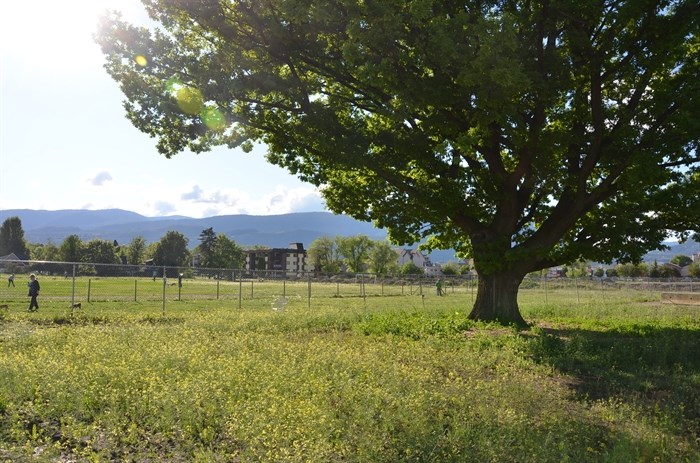One more obstacle to building more houses in BC: root balls

B.C. is trying to clear all the hurdles to building more homes in hopes of putting a dent in the housing crisis.
So far, the province has its sights set on red tape and regulation, but there’s another flashpoint on the way to building a healthier home market: Urban trees.
“Urban trees, we all love them,” Mark Holland, president of Vancouver Island based Westplan Consulting Group, told Kelowna city council recently. “They are fundamental identity pieces of some of our neighbourhoods. They mitigate heat islands, they carbon sink, they clean air, they’re urban habitat and they’re gorgeous.
“But they are a challenge for us. Whenever someone comes to me to ask me to work on a project it’s the first study we do. We get the arborist out. I need to know where the root balls are of the trees we have to keep because the root balls take out parking and underground parking. You can’t park in a root ball.
“They’re usually in the wrong space for utilities. And, obviously, they’re weaponized by folks who don’t want change in their neighbourhood.”
It’s another compromise the construction industry says it can mitigate.
That tension is playing out all over the province and, council was advised recently, trees can have a major impact on projects if they have to be protected.
“I just had one building that got seriously hammered because we had three oak trees and they lost six parking stalls because of the root balls on them,” Mark Holland told council.
READ MORE: Trees or homes? Central Okanagan politicians need to focus on housing crisis
He gave a presentation on infill housing to council on behalf of the Urban Development Institute, where he heads its education program. Every community, Kelowna included, is going to be concerned when the urban canopy is removed. Kelowna is not as bad as Oak Bay where Holland has done a number of projects.
“For those of you who have been to Oak Bay, you know what the Garry oak trees mean to Oak Bay,” he said. “You start cutting down oak trees and you’re in for very, very deep political problems."
But Oak Bay, and most other cities, weren’t always like that.
“Remember that every neighbourhood with those old trees, when that neighbourhood was built, it was a clearcut,” Holland said. “I’ve shown pictures of Oak Bay in 1912 when they started to build it. It was absolutely stumps and a clearcut.”
The other thing to keep in mind is that, no matter how careful a builder is, there are real risks to trees near new construction.
“Unfortunately they don’t do well, many of them, when you urbanize and cut right up to the edge of the area,” Holland said. “You’ve got to take care of them because they’re under a lot more stress.
“They do come back. They do grow. Our current species grow fast. They grow four to six feet a year. They can quickly fill in in a few years and have a very high canopy. And, the new trees survive in urban spaces way better than the old ones do with the species that we’ve got.”
Kelowna's planning director Ryan Smith said the city had no formal policy around trees for infill projects, although that may change.
“There’s going to continue to be a tension between tree protection and tree planting and infill development,” Smith said at that meeting. “It’s interesting because you can get 200 trees removed in the grading of a single-family subdivision on the outskirts of the city and not get one call and we can have one tree removed on a downtown property for a three-plex and get 100 calls.”
To contact a reporter for this story, email Rob Munro or call 250-808-0143 or email the editor. You can also submit photos, videos or news tips to the newsroom and be entered to win a monthly prize draw.
We welcome your comments and opinions on our stories but play nice. We won't censor or delete comments unless they contain off-topic statements or links, unnecessary vulgarity, false facts, spam or obviously fake profiles. If you have any concerns about what you see in comments, email the editor in the link above.



